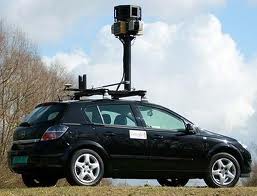Almost everyone has heard the company Google associated with the internet, but did you also know they are now working on a robotic car the can drive itself? In 2010, Google’s engineers began testing its robot cars on actual roads in California. Google is using seven typical cars, six Toyota Prii and an Audi TT, and installing an “artificial-intelligence software that can sense anything near the car and mimic the decisions made by a human driver” (new York times). This artificial-intelligence system on the robot cars consists of “a rotating sensor on its roof, which can scan more than 200 feet in all directions to create a 3D map of the car's environs; a video camera mounted behind the windshield, which helps the navigation system spot pedestrians, bicyclists, and traffic lights; three radar devices on the front bumper, and one in the back; and a sensor on one of the wheels that allows the system to determine the car's position on the 3D map” (cnet). The cars use a GPS navigation system to know where to go, and always drive the speed limit because the speed limit of every road is programmed into the navigation system. The cars are still in the beginning stages and therefore test cars still have a person behind the wheel to take over if needed and a technician in the passengers seat who is monitoring the software system. As of October 2010, Google’s seven test cars together had driven 1,000 miles with no human intervention and 140,000 miles with limited human control. Some of the impressive driving tasks the robot cars have completed include merging onto a busy freeway attaining speeds around 60 mph, and then exiting the freeway a few exits down. So far, the only accident a robot car has been involved in was when a car was “rear-ended while stopped at a traffic light” (new York times).
Though these cars are nowhere near ready to be mass produced and available to the public, there is a dream that one day, hopefully within a few decades, that the cars will be. If these cars can be introduced to the public, there would be many advantages. The main goal is to increase driving safety, which should be possible with the robot cars because they can react quicker than a human could. Other advantages to robot cars are that “they have 360-degree perception, and do not get distracted, sleepy, or intoxicated” (new York times). Theoretically this could mean having more cars on the road because with faster reaction times cars could drive closer together. Moreover, since the cars should greatly reduce the number of accidents, cars could also be built lighter and more fuel-efficient.
The person behind the robot car testing is Sebastian Thrun, the 43-year-old director of the Stanford Artificial Intelligence Laboratory, a Google engineer and the co-inventor of the Street View mapping service (NY times). Currently there are 15 engineers involved in the project as well as more than a dozen people Google hired to act as “drivers”. Google stated that there isn’t a plan to create a business from the robot cars yet, but instead right now is searching for a way to increase highway safety and decrease the nation’s energy cost. At this point, Google’s engineers willingly admit there are still many unsolved problems remaining. For example, engineers are unsure how to have the artificial-intelligence system account for and react to the signals a traffic cop or crossing guard might give.

No comments:
Post a Comment